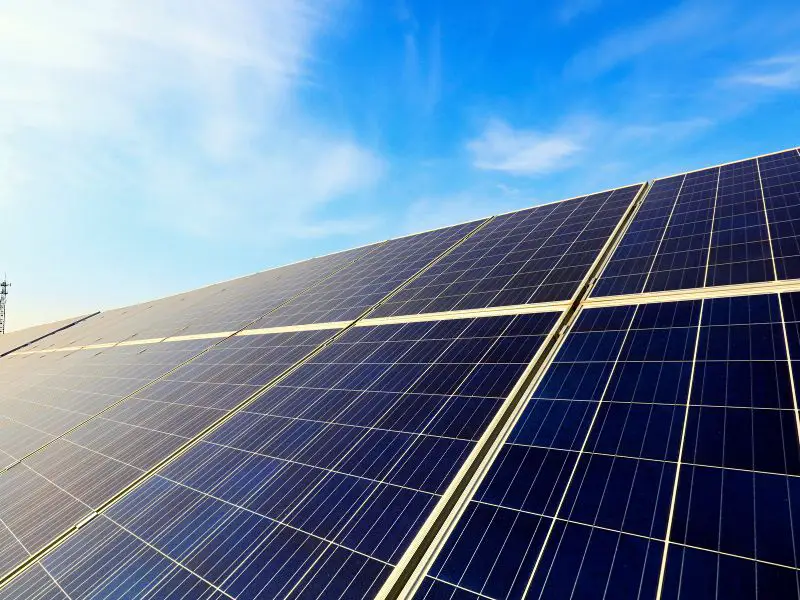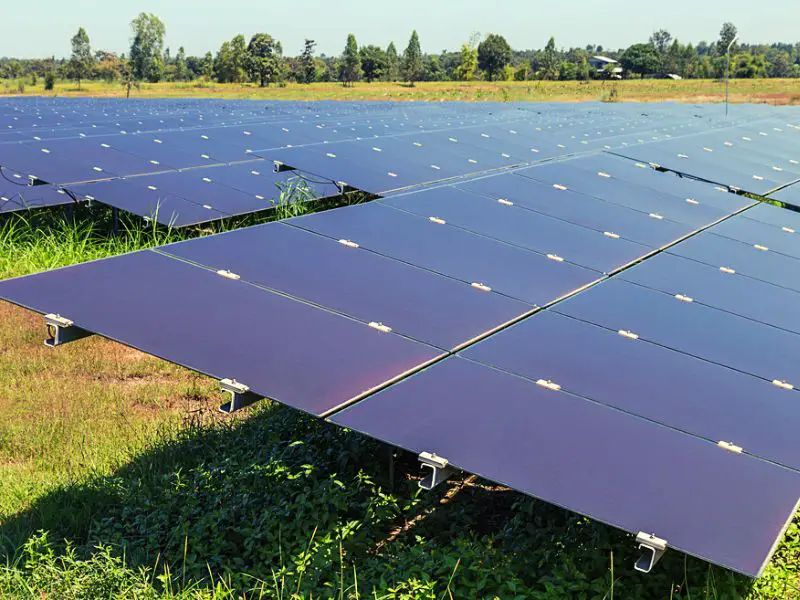Most solar panels today fall into three categories: thin-film, monocrystalline, and polycrystalline.
These types are determined by the solar cells that make up the panel. And due to the varying features of each type of solar cell, various panels are better suited to particular environments.
In this article, we look into three types of solar energy panels, how these solar panels work, and the cost of every type.

How Do Solar Panels Work?
Solar panels harness the sun’s rays and transform the power into usable forms of energy, such as electricity.
Solar panels, in their most basic form, are made up of individual solar cells, each constructed using alternating silicon, boron, and phosphorus layers. The positive charge comes from the boron layer, the negative charge comes from the phosphorus layer, and the silicon wafer functions as the semiconductor for the entire structure.
When photons from the sun hit the panel’s surface, electrons are ejected from the silicon “sandwich” and into the solar cells’ electric field. This generates a directed current that forms usable electricity.
Three Types of Solar Panel
1. Monocrystalline
A monocrystalline solar panel refers to the standard solar panel used by most of the world. These comprise silicon wafers cut into precise rectangles, an idea that dates back to the 1950s.
Because of their power output and efficiency, monocrystalline solar panels are now the most popular type of residential solar panel. Monocrystalline solar panels achieve over 20% efficiency, making them the most efficient panels available.
Depending on the properties of the semiconductors and the architecture of a solar cell, part of the light from the sun’s rays can be reflected, transmitted, and then turned into energy.
2. Polycrystalline
Polycrystalline has existed for a considerable time, and people on a budget favor this panel.
Typically, the efficiency of these solar panels ranges from 15 to 17 percent. But although they are less efficient than their monocrystalline counterparts, they have a lower cost. In contrast to monocrystalline cells, polycrystalline cells are composed of silicon. This simplifies cell production, producing a cheaper final product for the consumer.

3. Thin-Film Solar Panels
Thin-film solar panels are less capable than monocrystalline and polycrystalline panels. While efficiency varies depending on the material used in the solar cells, they typically has an efficiency of 11 percent.
Lower efficiency ratings indicate that more thin-film solar panels would be required to supply the same amount of electricity as a monocrystalline or polycrystalline. As a result, thin-film solar panels may not be the ideal choice for home solar. However, they make the most sense in larger installations, such as utility-scale solar projects, where more panels may be put in to satisfy electricity demands.

Solar Power Types by Performance
Highest Performance: Monocrystalline
The efficiency ratings of monocrystalline solar panels range from 17 to 22 percent, making them the most efficient solar panels.
Monocrystalline efficiency ratings are perfect for use in homes that have a limited amount of roof space. This is because you will require a lower total number of panels to generate the same amount of power.
In addition to having the best efficiency ratings, monocrystalline panels often have the highest power capacity ratings. Most monocrystalline panels today have a minimum power output rating of 320 watts but may go up to 375 watts or higher!
Middle Performance: Polycrystalline
The efficiency ratings of polycrystalline panels vary greatly. The most common product, solar panels, ranges from 15 to 17 percent. This is because there are multiple types of polycrystalline cell architecture, and each has different efficiencies.
These panels have the benefit of a lower cost than monocrystalline solar panels. This is because they are made of silicon, simplifying the production process and lowering overall costs.
Lowest Performance: Thin-film
Thin-film solar panels have low efficiencies. A few years ago, the efficiency of thin films was in the single digits. Researchers have recently attained 23,4% efficiency with prototypes of thin-film cells, although commercially available thin-film panels typically have efficiencies in the 10–13% range.
To supply the same amount of power as crystalline silicon solar panels, you need to install more thin-film panels across a larger area to fulfill your energy requirements. Therefore, thin-film solar panels do not make sense for residential installations with restricted space.
Solar Panel Type by Cost
Highest Cost: Monocrystalline Panels
The cost per watt for monocrystalline solar panels can range from $.80 to $1.30 more than their polycrystalline and thin-film counterparts. However, if you are looking for the best possible solar panel, this extra investment may be worth it in the long run.
Monocrystalline panels boast the highest power output ratings, which may interest homeowners desiring a more powerful solar installation.
As production and solar panel technology has advanced, the price gap between these three panels has diminished significantly. According to the Lawrence Berkeley National Laboratory, monocrystalline solar panels cost around $0.05 per watt more than their polycrystalline counterparts.
Middle Cost: Polycrystalline Panels
Historically, polycrystalline panels have been the least expensive alternative for homeowners eager for solar energy without compromising panel performance. Between 2012 and 2016, polycrystalline panels captured a substantial portion of the home solar installation industry due to their competitive pricing.
Cheapest Cost: Thin-film Panels
Thin-film solar panels typically have the lowest power output ratings, which means to produce the same amount of electricity as monocrystalline solar panels, you would need to install more thin-film panels over a larger area. Plus, thin-film deteriorate considerably quicker than other panel types, requiring frequent replacement and increasing long-term recurrent costs.
The Capacity of Each of the Different Solar Panels
Monocrystalline panels provide the maximum output and power capacity because of their greater efficiency per square foot. The typical conventional 60-cell solar panel is between 310W and 350W. Surprisingly, polycrystalline panels are not significantly behind. This 60-cell solar panel has an average output of between 250W and 300W.
The capacity of thin-film panels, on the other hand, is more difficult to scale due to the variety of sizes available. However, as a general rule, the overall wattage output of these panels is lower than that of crystalline panels. To provide a point of reference, the maximum output of a high-efficiency CIGS panel is 250W, which places it at the bottom of the polycrystalline spectrum.
Figuring Out the Best Solar Panels for Your Needs
Location is essential when choosing the kind of solar panels that best meet your needs. If you have limited space, the most efficient solar panel for your needs is monocrystalline. This panel is perfect if your roof has a smaller surface area or if it cannot handle the weight of an excessive number of panels. This means that the high efficiency of monocrystalline panels can help you realize the greatest possible cost savings.
If, on the other hand, you own a larger property, such as a farm or a business structure, you will find the opposite true. At a large land, the lower efficiency of a polycrystalline panel can be compensated by the cheaper installation costs, which allows you to install more panels to pay for the output loss.
When a crystalline silicon panel is not practical, thin-film panels offer an excellent alternative. Thin-film panels are perfect for use on roofs or on the small tops of RVs. In addition, they are reliable for hotter situations due to their greater temperature coefficient.
Author’s Note
The best solar panels for you are those that will enable you to save money on your power bill and help you become environmentally conscious at the same time. It would be best if you shopped around for the best prices and panels that can power you in all seasons and work for your energy needs.
Here are some articles that will help you learn more about solar energy:


3 thoughts on “Solar Energy Panels: Three Types on the Market”